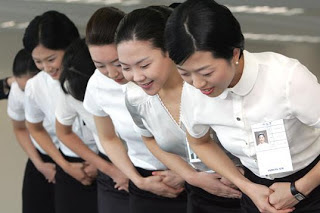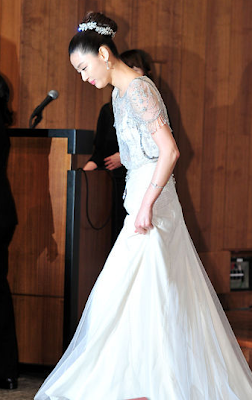Sometimes they use both hands to grasp the other persons hand.
They will also clasp hands momentarily while bowing slightly at the waist instead of shaking hands.
Lastly, it will be completed with verbal greeting, saying "An-yung-ha-say-oh" (literally "It goes peacefully")
Why do Korean people bow?
- To show their respect to the senior
- Friends do not bow with each other unless in public or a formal occasion
- The person of lower status bows to the person of higher status
- Bow during initial meeting in social gathering
- Bow to each person when leaving a social gathering
Posture in bowing
Casual bow
This is the greeting used with colleagues or friends.Korean people will bow this way when they can’t perform the deeper bows. As an example, when they are in cramped spaces such as elevators or public transportation.
Respectful 30-45 Bow
This is the most common standard bow. It is used to greet almost anyone in order to show respect.
“Belly-button” Bow
The "belly-button"bow, also called navel bow, is mostly used by women in uniform .
It is commonly used by flight attendants and salespeople. They clasp their hands together at the navel position when bowing.
90º Bow
It’s a form of utter respect, an intentional showing of service and obedience.
It is also used to apologize.
Big Bow
It is also called knees-to-the-ground bow or deep bow.It is reserved for special occasions such as holidays, weddings, funerals, greeting elders after a long period of absence. Korean people thankfully bow down to the elders to show appreciation. They also bow down to ask for forgiveness for wrongdoings.
source:
http://english.visitkorea.or.kr/enu/SI/SI_EN_3_6.jsp?cid=940515
http://blog.korea.net/?p=2622
https://asia247.wordpress.com/2012/05/19/culture-shock-greetings-south-korea/
http://www.planetesl.com/resources/greetings.html









Hi? "Used" Hi, Hello, Good Morning with each other. You can simply say “?” Greetings can be sent to friends or someone younger than you. When you say goodbye to someone, you can say "가세요 가세요 [An Nyong Hi Ga Se Yo]" in Korean.
ReplyDelete